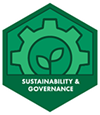Webinar | The Role of Technology in Global Methane Emissions Reduction
Population growth, the rapid adoption of AI, and the data centre infrastructure it requires, bring an increased global demand for energy. And while the energy mix is changing, fossil fuels still play a major role, requiring cleaner energy solutions with reduced emissions.
Carbon dioxide (CO2), responsible for most emissions, has long-lasting effects, which technologies like CCUS and DACC aim to reduce. Methane (CH4), an even more potent but shorter-lived greenhouse gas, presents an opportunity for significant reductions through detection and mitigation technologies. This lecture explores methane sources in oil, gas, and waste management, current detection methods such as optical gas imaging cameras in satellites, and evaluates the voluntary and regulatory frameworks that drive methane emissions reduction action across the globe.
This session will be held through On24.
For any questions about this event, please contact [email protected].
About the presenter
 Stanley Opara is a geophysicist with nearly two decades of experience in the oil and gas industry in Canada and overseas. His career bridges exploration geophysics, technology commercialization, business development, carbon markets, and policy analysis, which gives a unique perspective of the oil and gas value chain. He is the executive director of the African Methane Mitigation and Intelligence Network, a Canadian non-profit, where he leads efforts to reduce methane emissions across Africa’s oil and gas sector in partnership with various organizations. His current focus is on transferring practical knowledge and technologies from the Global North to help African operators detect, quantify, and mitigate methane emissions, while also working to raise awareness in Canadian communities about the global impacts of potent greenhouse gases.
Stanley Opara is a geophysicist with nearly two decades of experience in the oil and gas industry in Canada and overseas. His career bridges exploration geophysics, technology commercialization, business development, carbon markets, and policy analysis, which gives a unique perspective of the oil and gas value chain. He is the executive director of the African Methane Mitigation and Intelligence Network, a Canadian non-profit, where he leads efforts to reduce methane emissions across Africa’s oil and gas sector in partnership with various organizations. His current focus is on transferring practical knowledge and technologies from the Global North to help African operators detect, quantify, and mitigate methane emissions, while also working to raise awareness in Canadian communities about the global impacts of potent greenhouse gases.
This event applies to the following Work Readiness Program skill areas:

